Sometimes it’s not enough to simply kick things up a notch. Three or four notches might do the trick, though!
For all those frustrating times, you’ve wanted to switch things up and take your DJ set up a BPM mountain. We’ve got you! Mixing between genres effectively creates a sense of musicality with a matching skill set. Depending on the genres, it can be tricky to master but brings rewarding results. After all, the more genres a DJ can mix, the more eclectic their style can be!
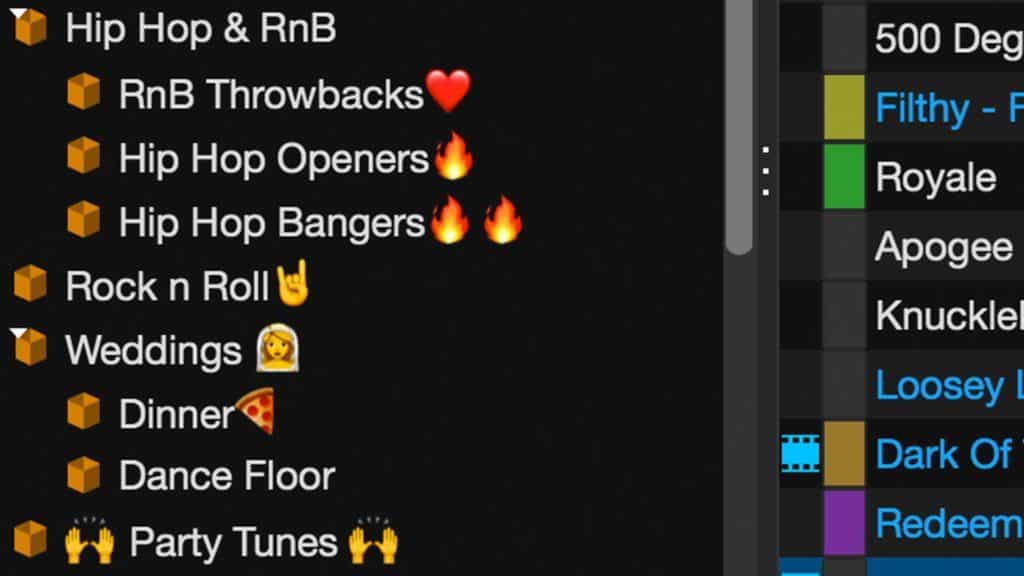
Mixing between genres can prove to be a tricky skill to master. However, thanks to our dedicated course, we break down multiple processes to achieve seamless transitions every time.
Here, we introduce a handy technique that helps you hop between two genres with a wide BPM gap! The breakdown comes straight out of our DJ Hub. The Hub is designed to give you all the tools you need to succeed as a DJ. It includes advice and support for all DJs, including seasoned professionals levelling up their skills.
For more on transitions, we also have an entire course dedicated to tutorials like this one in our DJ Transitions Course.
In this breakdown, we demonstrate a trick behind pulling off a massive BPM hike with style, taking the mix from bass house right up into hardstyle in one transition seamlessly.
The Transition
In our YouTube video tutorial, How To Transition EASILY Between Different BPMs, we start with a bass house track, analyse its structure for mixing purposes and choose where our mix-out point will be. Then there’s the hardstyle track! There are more technicalities to consider in preparing this track for the transition as its BPM is not in the same territory.
Looking at the BPM, we can see it is at 150bpm and in a different key. This can usually present challenges for DJs, but instead, we can show you how to turn challenges into creative opportunities. The mix will be carried out traditionally, with BPMs locking for a clean beat match and EQ applied for a smooth blend. By the time the transition completes, the hardstyle track will swiftly return to its native BPM with some careful movement of the tempo adjust. As a bonus, its acceleration will build energy on its ascent, adding to the impact of the incoming drop.
So how do we do it?
Video Tutorial
The Technique, Broken Down
The controller we are using is the Numark Platinum FX plugged into a laptop running Serato DJ Pro.
The bass house track is AC Slater and Curbi – Navigator, which plays natively at 128 BPM.
The hardstyle track is KSHMR & Hard Lights feat. Charlotte Boss – Over & Out, which belts out at 150 BPM natively.
A big tempo adjustment is needed for the 22 BPM leap between the tracks. To achieve this, the tempo range in your DJ software must be set to accommodate this. In Serato, the default +/- 8% tempo range will only bring Over & Out down to 138 BPM at its lowest. Adjusting the range to be +/-16% allows it to match the native BPM of Navigator: 128 BPM.
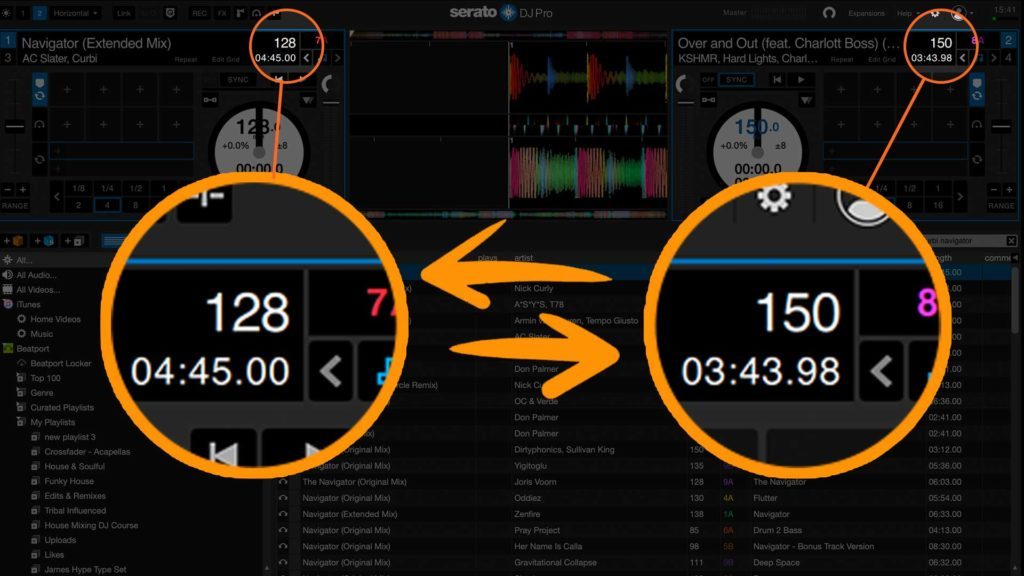
Moving from 128-150bpm can usually prove challenging. Find out how to make the transition in this unique tutorial.
The smaller the tempo range of an adjustment slider, the higher its resolution for increasing and decreasing the tempo. For DJs who like to make manual adjustments to a mix, a higher resolution is better for fine-tuning. For this reason, we have decided not to make the tempo adjustment range too high; we’ve created a balance between having enough range and resolution for more control when in the mix.
Adjusting the tempo range in Serato can be done using a combination of buttons on your controller or the deicated tempo control if you have one. Now that the tempo range fits our plans for the giant BPM shift, we decide to turn key lock off. This is due to hardstyle’s synth-heavy sound. With key lock off, the synths leading to the drop will key shift, dramatising the acceleration and driving energy whilst the BPM increases.
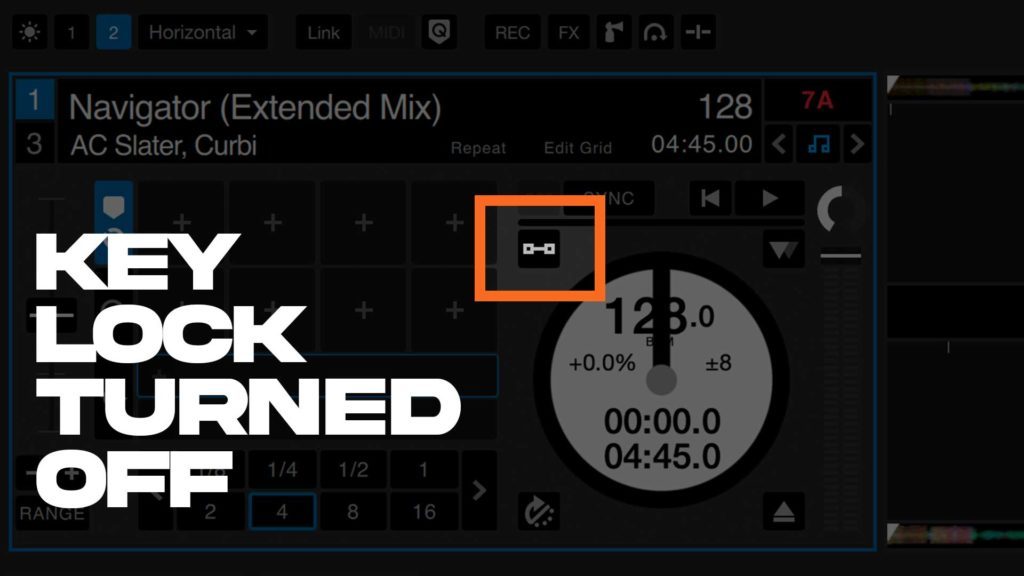
Serato’s ‘Key Lock’ or ‘Pitch ‘N’ Time’ Button is turned off for this trick.
Key Lock locks a track’s key in place when its tempo is adjusted, a modern and digital phenomenon! With key lock off, adjusting the tempo also means adjusting the track’s pitch. The key of a track, therefore, goes up or down a semitone for every three per cent of change to it’s tempo. This is why tempo adjustment faders on analogue turntables are often referred to as pitch adjustment faders. In this transition, the leap of 22 BPM is equivalent to a 16% change in pitch. So, with key lock off, the track’s key will shift five semitones in its ascent back to its native territory. Quite a dramatic shift!
If key lock were left on at such a drastically lowered BPM, the lead synth, as with vocals, would sound artificially time-stretched as the DJ software needs to do some serious resampling to keep it in its original key. The Pitch ‘N’ Time DJ plugin for Serato DJ helps with this, giving the platform studio quality sound. The effect of the track speeding up is also much more subtle with key lock on, with the only noticeable change being the speed of the BPM increasing.
To turn key lock off, look for the feature in your DJ software or on your hardware controller. On the Platinum FX, the buttons to press are SHIFT and the PITCH BEND ‘+’ button.
In preparation for the BPM upwards drive, a Hot Cue to the pre-drop lead synth is set on Over & Out. This will be triggered during the transition to bypass its vocal, helping to keep the mix tidy. At minus 16% pitch, and with five semitone key shifts, the vocal sounds a little ‘off’ and drawn-out!
The Hot Cue is set ahead of time in Serato and is triggered with the corresponding performance pad. The performance pads need to be set to Hot Cue mode. On the Mixtrack Platinum FX, the pad mode is called CUE.
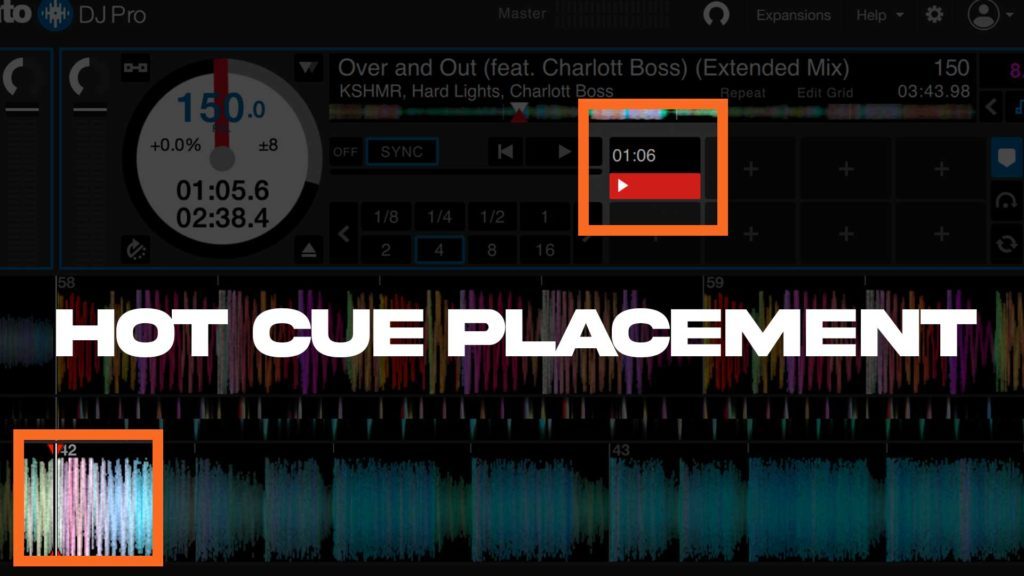
In this example, a hot cue is placed on the build-up, so it’s easy to jump straight into that section of the song.
There is a one-bar break just before the Hot Cue’s trigger point. The blend portion of the transition needs to be completed just before this break. During this time, hands can poise over the performance pads and the tempo adjustment slider, ready to pounce into action! Once the bar has played, the Hot Cue to the pre-drop lead synth is activated and the tempo is adjusted to its native BPM.
Before we adjust the tempo, we need to calculate the amount of time we have to make the adjustment steadily. To do this, we count the length of time of the pre-drop synth build. This is counted at eight bars. We, therefore, need to make eight nudges on the tempo adjustment slider’s journey back to its centre. One nudge per each of the eight bars makes sense for a seamless BPM build!
Once Over & Out is back in its native territory, the set can continue with hardstyle, or this BPM hike technique can be performed in reverse to allow your foot to come off the BPM gas!
The Trick, Performed!
With all the calculations taken care of, it’s time to switch it up!
As Navigator reaches its final drop, Over & Out is dropped in. A lowpass filter is hiding the entire audio of Over & Out. Also, its BASS pot is turned fully to the left, meaning it has no bass sound when it is revealed from behind the low pass filter.
The lowpass filter is engaged by fully twisting the corresponding FILTER pot to the left. It is slowly disengaged by twisting the pot to the right, allowing the mids and treble to start playing through. Then, the BASS pot for Navigator is slowly twisted left, whilst the BASS pot for Over & Out is twisted to the right. This is known as swapping the basses; as one track’s bass loses power, the other’s starts coming into existence, creating a smooth swap over with no perceivable loss of low end in the mix.
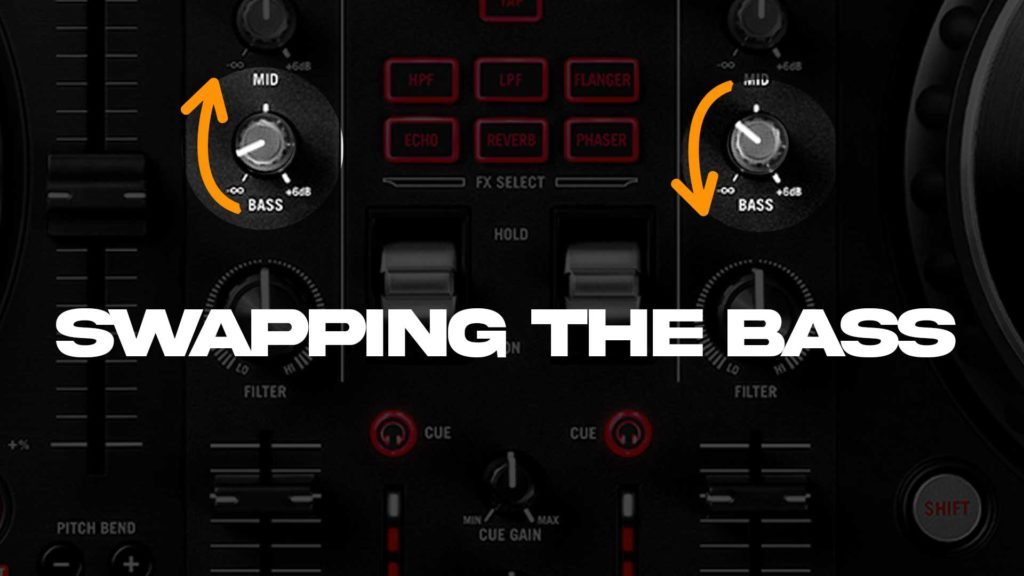
Nearly all transitions in mixing as a DJ include the bass swap with EQs. This mix is no different!
After 16 bars, the basslines from the tracks have fully swapped positions, and the blend is finished. Navigator quickly exits the mix with a swift pull down on its upfader at bar 15 of the transition. Its early exit allows breathing room for the one bar break on Over & Out.
Now the Hot Cue to the pre-drop synth on Over & Out is triggered. As the synth begins building, the tempo is increased in equal increments across eight bars, effectively raising the BPM with an organic build that doesn’t sound jarring. With the track returning to its normal BPM, the hardstyle vibe is established.
This transition into a much higher BPM was completed cleanly over 16 bars. It took a good amount of preparation, but the tracks blended well, and there were no strange artefacts resulting from having keylock turned off with such a pitched-down track. Plus, the rise in BPM brought with it some welcome energy owing to the key shifting synth.
Complete DJ Package
This trick is just one example of the exclusive content our Complete DJ Package members have access to.
This amazing value package gives you all you need to progress in your DJ journey with unlimited, lifetime access to all our DJ courses and content.
Tutorials include genre-specific mixing guides and technique-based tips to help you nail a particular skill, whilst our mix breakdowns get you to think and perform like a professional with complete tear-downs of iconic DJ mixes. Plus, with personalised feedback on your mixes, you’ll have support from a team of Pro DJs, every step of the way.
We’re so confident that we can get you where you need to be, fast, we offer a hassle-free money back guarantee if you are not mixing confidently within 60 days or less!
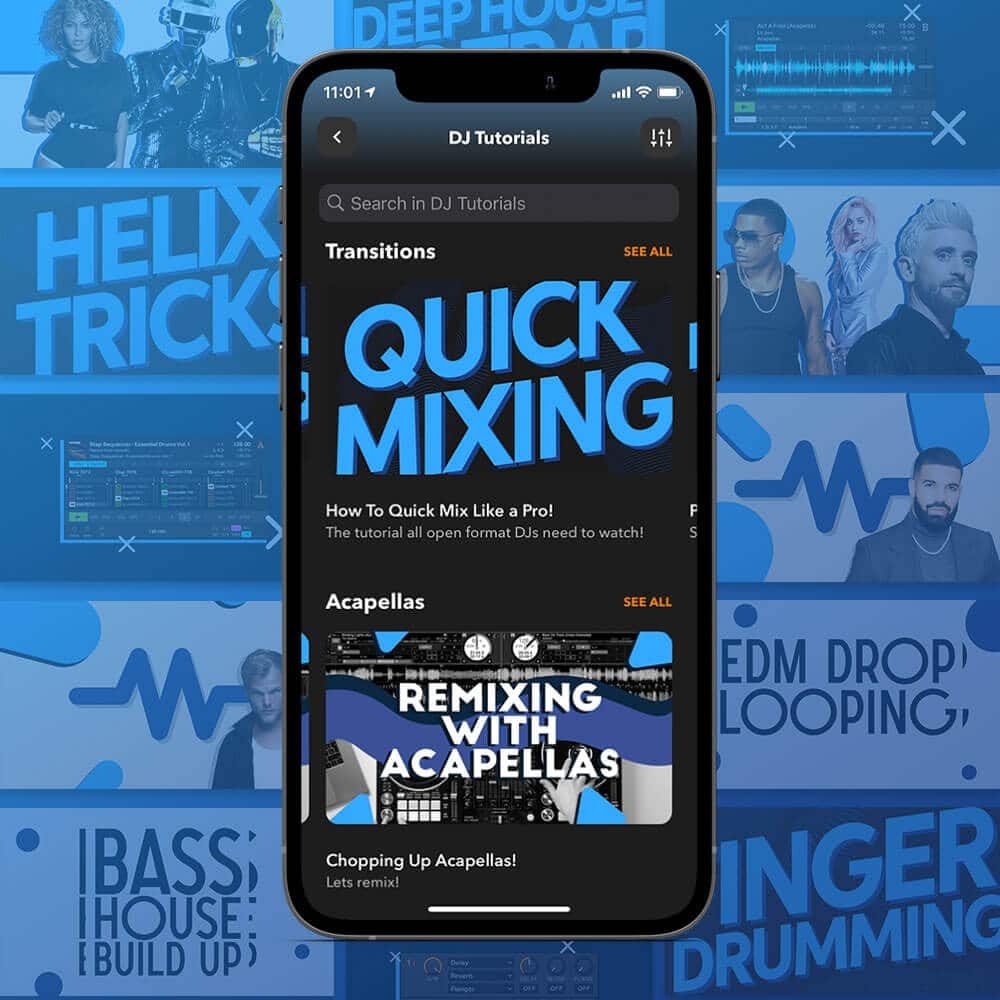 Join the conversation and add to the advice, tips and weekly stories from our team and members in our exclusive Facebook group or Discord server. Also, learn how to create a following and stand out on social media.
Join the conversation and add to the advice, tips and weekly stories from our team and members in our exclusive Facebook group or Discord server. Also, learn how to create a following and stand out on social media.
You’ll also get exclusive offers, discounts and giveaways from industry leaders in software, hardware and music.
Check out our Complete DJ Package today and learn more about this game-changing opportunity!

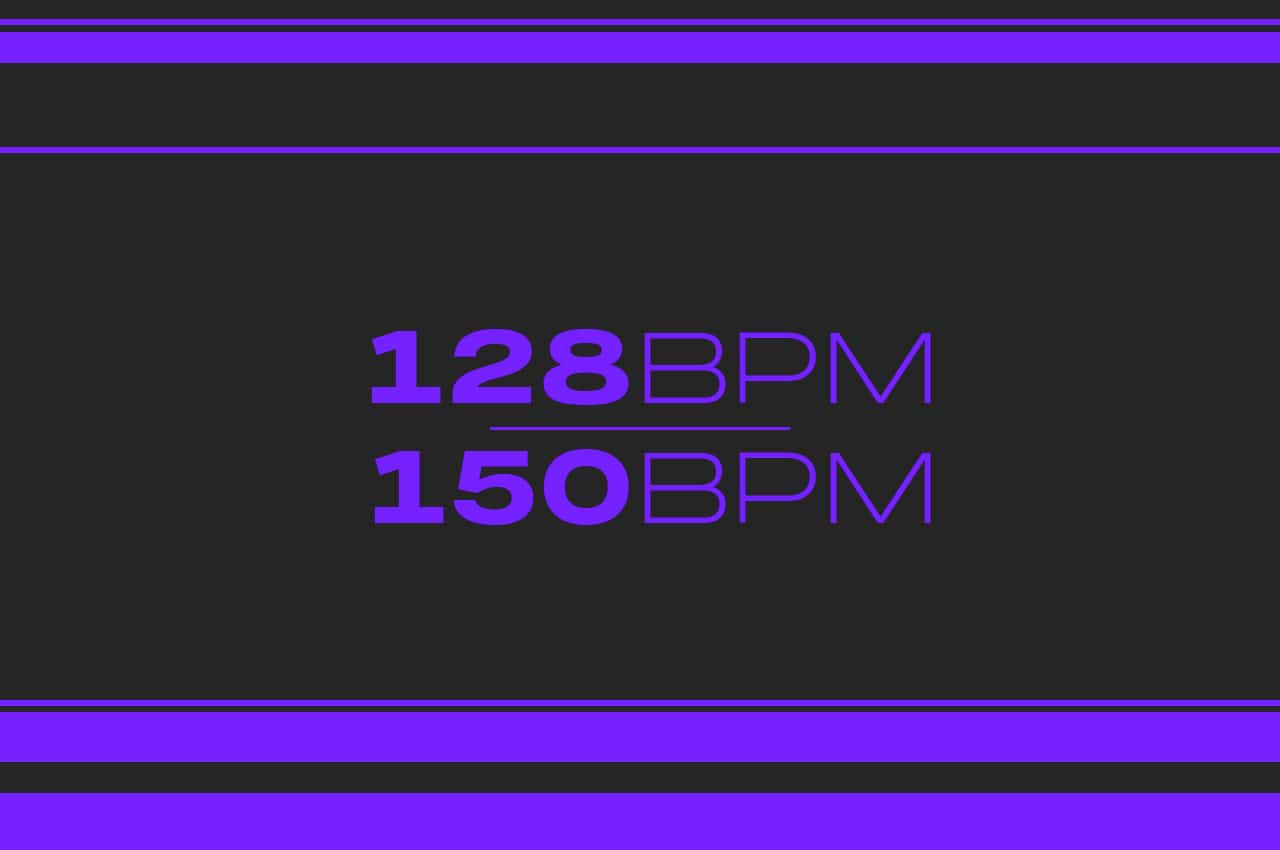
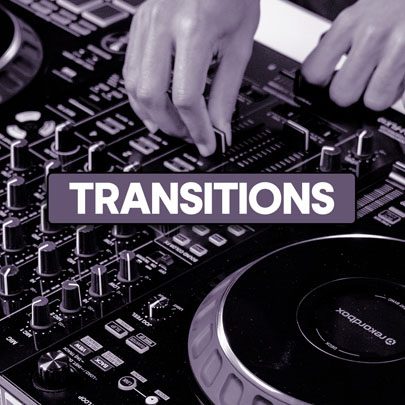
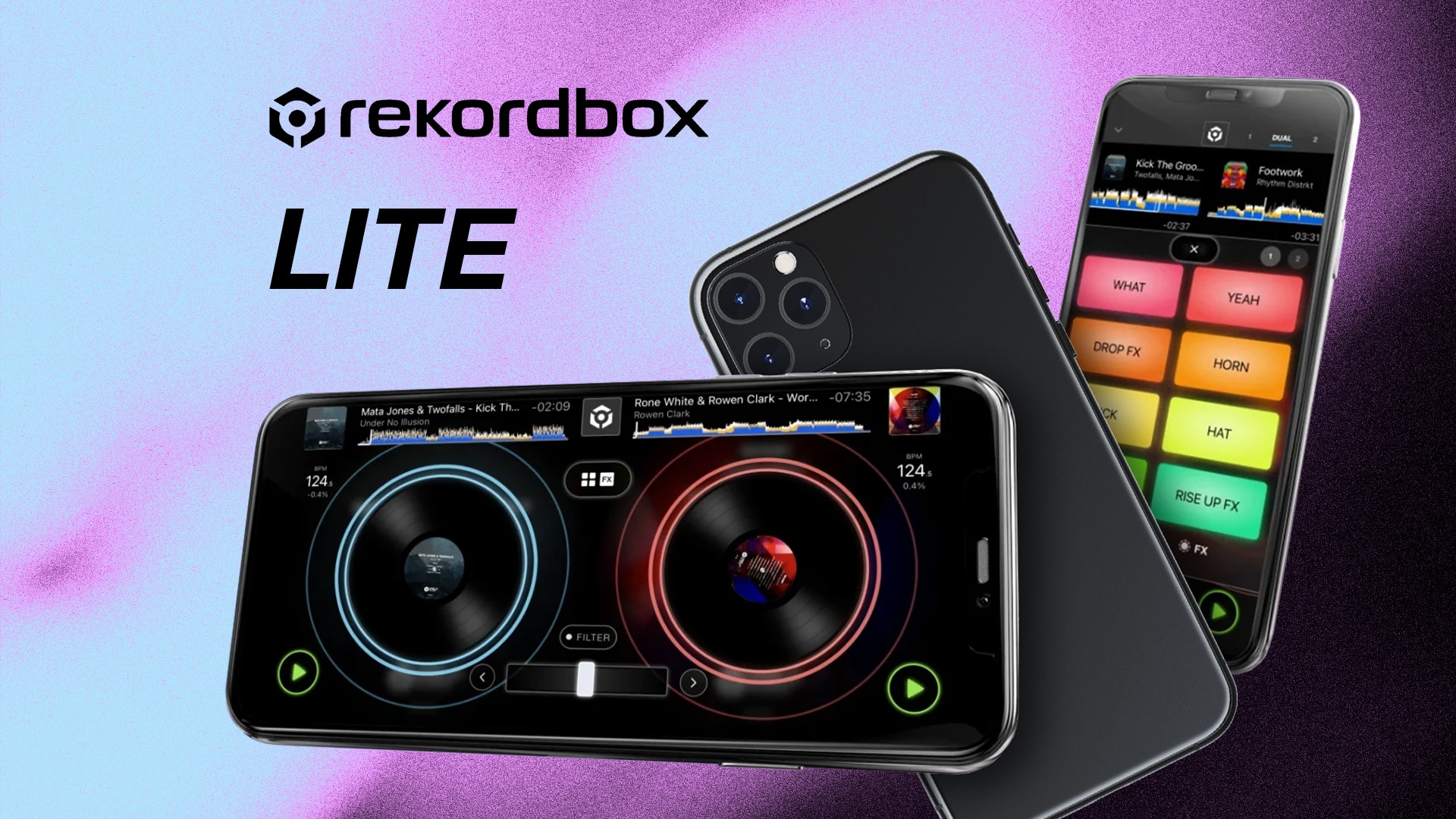

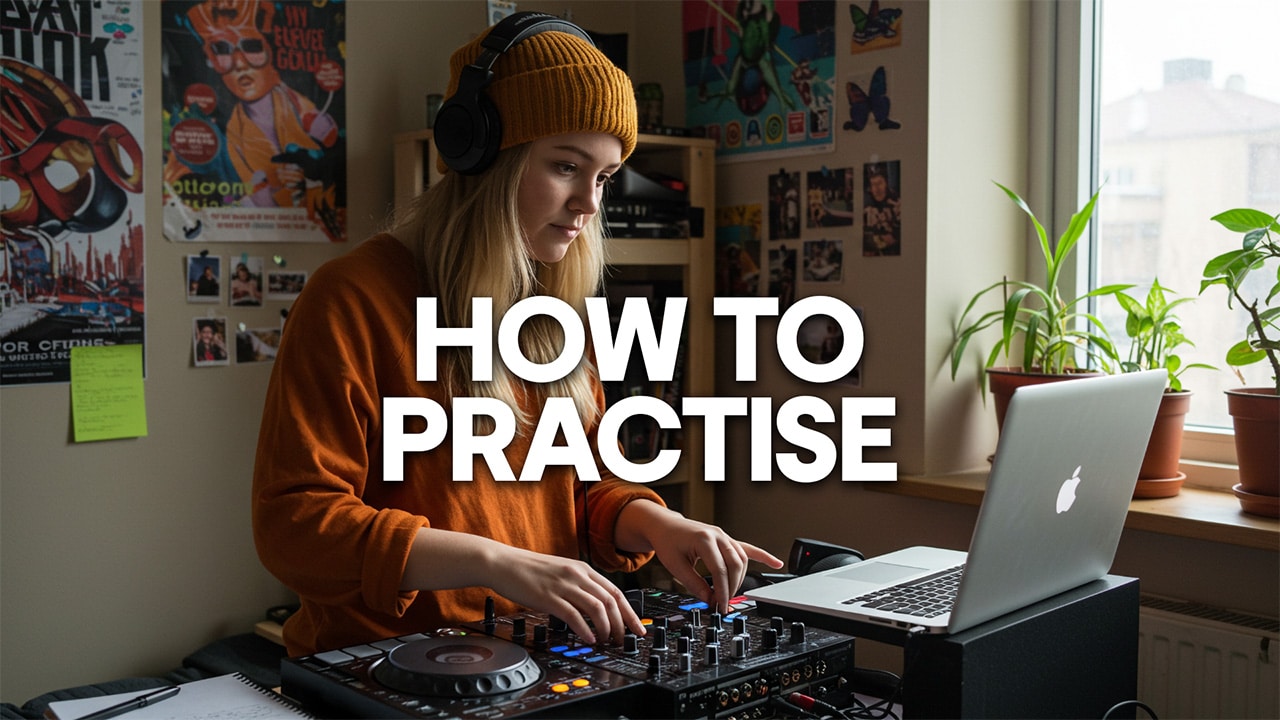
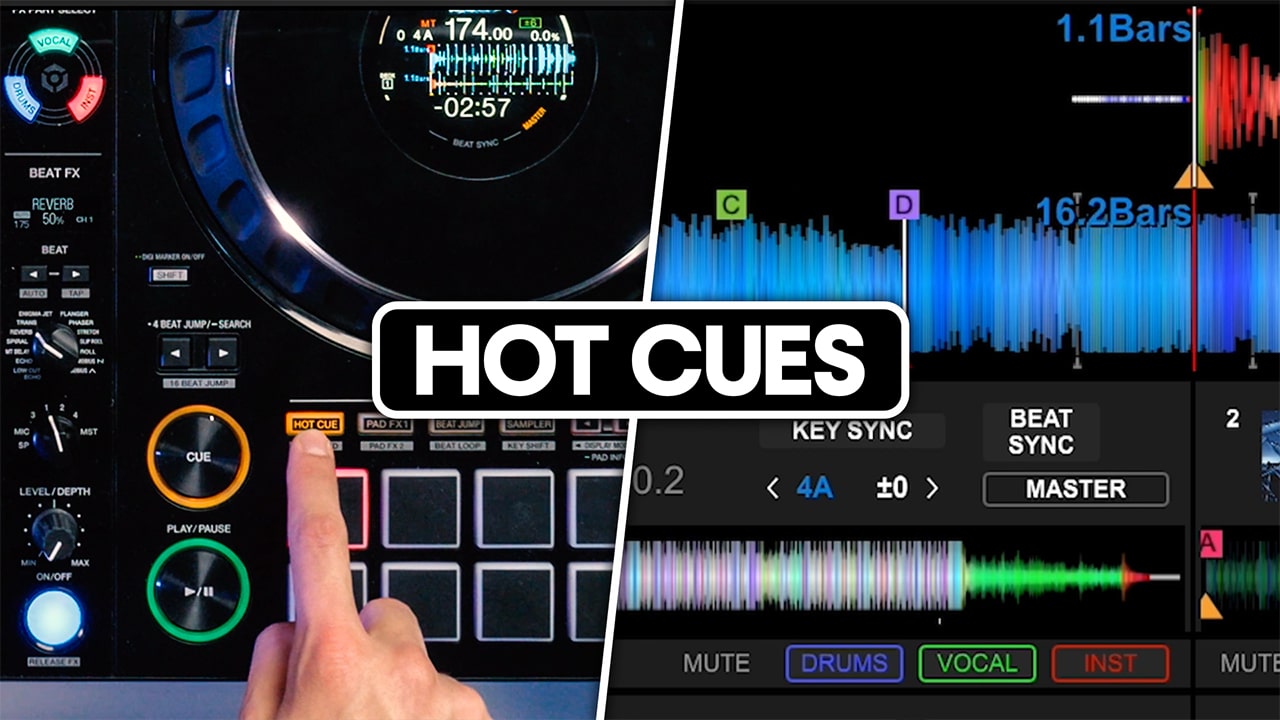
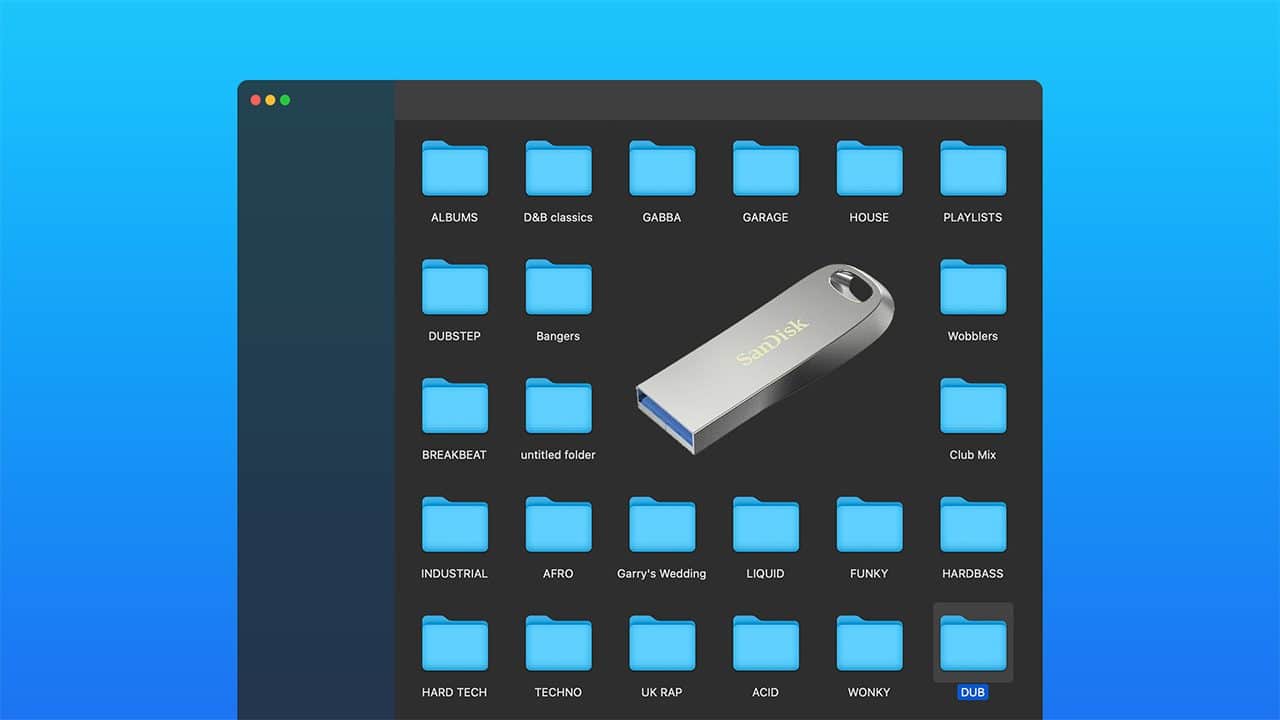
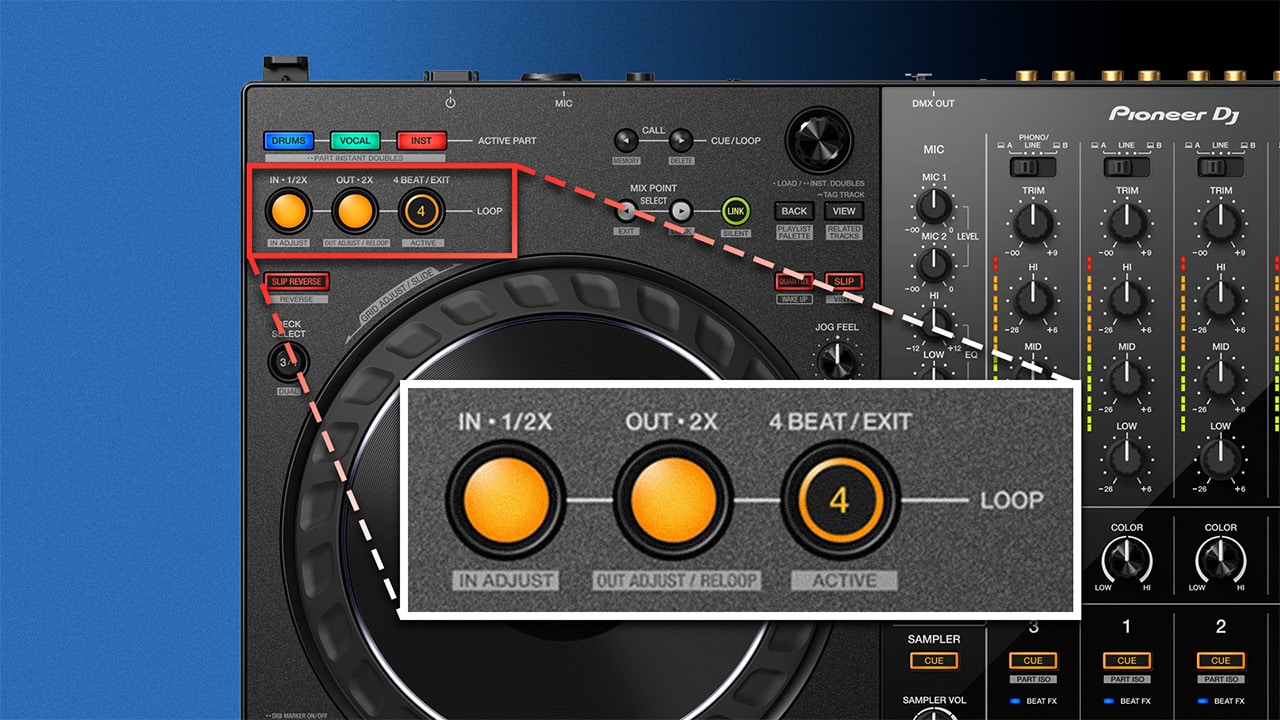
Yet again another trick broken down so us mere mortals can understand and follow!